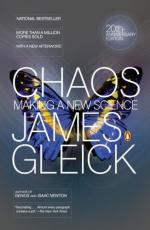
|
| Name: _________________________ | Period: ___________________ |
This quiz consists of 5 multiple choice and 5 short answer questions through chapters 7-8.
Multiple Choice Questions
1. In fluid dynamics, what condition for viscous fluids states that at a solid boundary, the fluid will have zero velocity relative to the boundary?
(a) Chaos theory.
(b) Momentum diffusion.
(c) No-slip condition.
(d) Period doubling bifurcation.
2. What controversial book did Thomas S. Kuhn publish in 1962?
(a) The Structure of Scientific Revolutions.
(b) Fractals Everywhere.
(c) Period Three Implies Chaos.
(d) Physical Review Letters.
3. When did Albert Libchaber join the faculty at The Rockefeller University?
(a) 1982.
(b) 1989.
(c) 1985.
(d) 1994.
4. What is the most abundant element in the universe?
(a) Oxygen.
(b) Hydrogen.
(c) Rhodium.
(d) Aluminum.
5. Where is the National Weather Service headquartered?
(a) Oklahoma City, Oklahoma.
(b) Silver Spring, Maryland.
(c) Hot Springs, Arkansas.
(d) Huntsville, Alabama.
Short Answer Questions
1. Who does Gleick quote as saying "It does not say in the Bible that all laws of nature are expressible linearily!" in Chapter 3, "Life's Ups and Downs"?
2. In mathematics, what refers to a map that exhibits some sort of chaotic behavior?
3. What is a natural science concerned with the study of life and living organisms, including their structure, function, growth, origin, evolution, distribution, and taxonomy?
4. What was the profession of Benoit Mandelbrot's mother?
5. Where was Hendrik Houthakker born?
|
This section contains 207 words (approx. 1 page at 300 words per page) |

|




